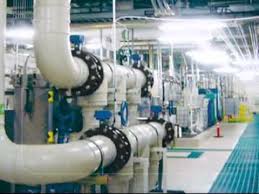
Concept
One of the most important components of the infrastructure in the industrialized world is the vast network of pipelines and process piping—literally millions and millions of miles. The term “pipelines” generally refers to the network of pipelines that transport water, sewage, steam, and gaseous and liquid hydrocarbons from sources (e.g., reservoirs, steam plants, oil and gas wells, refineries) to local distribution centers (“transmission pipelines”), and to the network of pipelines that distribute such products to local markets and end users (“distribution” pipelines). The term “process piping” generally refers to the system of pipes that transport process fluids (e.g., air, steam, water, industrial gases, fuels, chemicals) around an industrial facility involved in the manufacture of products or in the generation of power. Pipelines and process piping are generally made of steel, cast iron, copper, or specialty metals in certain highly aggressive environments, but the use of plastic materials is growing, especially in hydrocarbon-based distribution lines and in sewer lines.
Pipelines and process piping are the safest means to transport gases and fluids across countries or across manufacturing facilities. However, given the extensive network of pipelines and piping, failures do occur, which can be quite spectacular and lead to extensive property damage and loss of life. Given their potential impact, it is important to investigate the cause(s) of such failures, which often involve input from many different engineering and scientific disciplines
Product Range
Our Sister concern M/S. Enterprises having expertise in design, manufacture and installation of PVC, PP, FRP, GRP, GRE, HDPE pipe and fitting in the chemical and pharmaceutical industries.
We design, manufacture and install the following PVC, PP, HDPE and FRP/GRP, GRE products:
- Pipes
- Headers
- Fittings
- Ducts
- Stacks
Applications
- Transportation of Process Slurry.
- Transportation of Corrosive fluids.
- Hot and Cold Water Distribution
- Transportation of Process water.
- Transportation of chemical waste
- Transportation of compressed Air.
- Treated sewage pumping main.
- Oil flow lines
- Dredging pipelines.
Advantages
- Chemical Resistance.
- Corrosion Resistance.
- Low friction loss.
- Low thermal Conductivity.
- Light in weight.
- Abrasion resistance
- Long shelf life.
- Low Cost
- Ease of Installation
- Pressure Surge Resistant.
- Low maintenance.
- Easily available.
Design Standard
- DIN 16965 / 16966
- ASTM 2310 / 2992 / 2996
- ISO 14692
- IS 12709
- API 15LR
- AWWA C 950
- PS 15-69
- BS 7159 and
- AS 2634